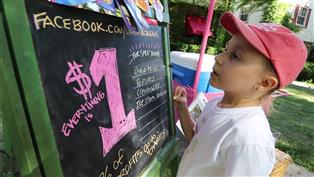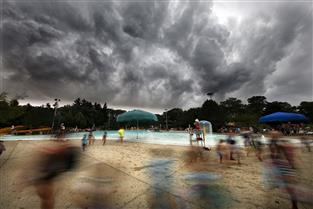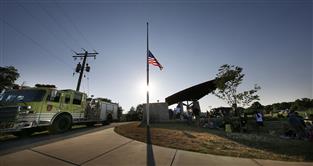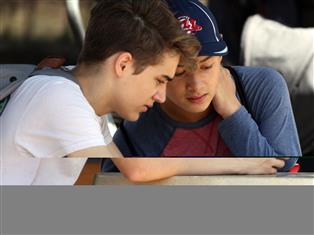Froedtert makes its construction site a classroom
Contractors, architects, the project owner — you'd expect to see them on a construction site. But 18 high school kids? Not so much.
But there they were last week, in a big construction trailer at the site where Froedtert & the Medical College of Wisconsin is busy building a 480,000-square-foot hospital addition at a cost of $117 million.
This was their fifth visit since May, and they've been there regularly, watching the project go from lines on paper to a hole in the ground to a foundation and a series of pillars.
A two-year program called Tech Terns, open to Bradley Tech juniors who are invited to participate, will allow the students to follow the construction almost all the way to the end. Though they spend full days at the site and in a classroom learning about the site, it's not a credit class — it's an extra, a way to learn for learning's sake.
Giving back
"Part of our project was a challenge to the entire team: How can we embrace the community, give back?" said John Balzer, Froedtert's vice president of facility planning and development. "We call it inclusion, in our system, and the traditional inclusion is you monitor minority spend and workforce and that sort of thing. But we wanted to go beyond traditional, and so our group, as we talked about it ... we thought, let's try and reach out to the school district."
Balzer said the program was a year and a half in the making.
Filling the pillars
"Today we visited the site outside, learned how they're filling up the pillars," said junior Christian Wilson, who said one of his trades teachers recommended him. "And upstairs we're understanding how they go through their schedule every day. How they, like, had to re-adjust and change for the weather."
Brian Marble, senior superintendent with Mortenson Construction, the construction manager, said the company had reached out to students in the classroom before, but never had them on site.
"They're a bright group; they ask a lot of questions," he said. "One of the advantages we've had is this is actually the fifth time we've had with them, so there's already starting to be a little familiar interaction that comes from that, and they've also been able to understand the progression of the design and construction of the building."
From graves on up
The students have visited once a quarter — every few weeks. In the earliest visits, they even saw some of the work of removing graves from the property. "They got to see the archaeologists," Marble said.
Before the program ends, they'll see the building top off, and a significant amount of the interior built out, he said.
Visit from on high
On a day last week, Wilson and his classmates got a visit from State Superintendent of Schools Tony Evers, Department of Workforce Development Secretary Reggie Newson and Milwaukee Public Schools Superintendent Gregory Thornton.
The students sat in rows, listening to speeches extolling the program, and none of them so much as yawned.
One student asked Evers, is this kind of learning likely to spread?
"I'd like to have this be all across the state," Evers said. "That's why you are trailblazers. We certainly need helpful partners and employers to make it happen, but I've seen it, and I know Secretary Newson's seen it, too: All across the state of Wisconsin people are stepping to the plate."
"You're like the first class," he said. "It can happen."
And the students erupted in applause.
More than construction
The students are learning more than how a building comes together, Evers said. Doctors and other Froedtert employees have spoken to them, and Evers said one girl told him she was going to become a chemist.
"This is about the science, it's about the technology, it's hands-on," Thornton said. "It's where it all comes together — an opportunity to help young people make choices."
Engagement is not a problem, he said.
"You give a young person an authentic experience, something that they can bite into and understand (with an) inner passion, that's what you get, that's the level of engagement you get," Thornton said. "We're unable to duplicate it in the classroom. This is real. You got machines running around, you got doctors running around, radiologists running around. ... They live in a multisensory lifestyle, they love the stimulus, and I think they've been stimulated in this program."
More from News and Features
- Anodyne Coffee plans to open location in Wauwatosa Village
- Wauwatosa Meetings: Aug. 4
- Video: Wauwatosa girl's curbside ice cream stand raises money for the hungry
- Wauwatosa News and Notes: Hands-only CPR training offered; Firefly Art Fair is Aug. 6-7
- Wauwatosa Ask Now: Why are there barriers and fencing along the North Avenue bridges over the Menomonee River?
- Mystery Photo Contest: July 28
- Wauwatosa gears up for National Night Out event, this year at the zoo
- Election 2016: Wisconsin's 4th District candidates weigh in
- Wauwatosa's Luther Manor residents share smiles through flower delivery
- Wauwatosa Police Report: July 17-23















